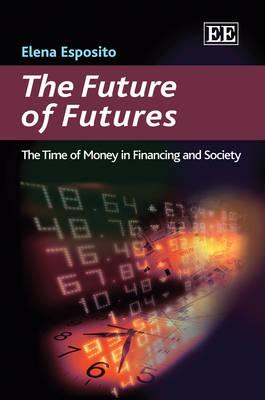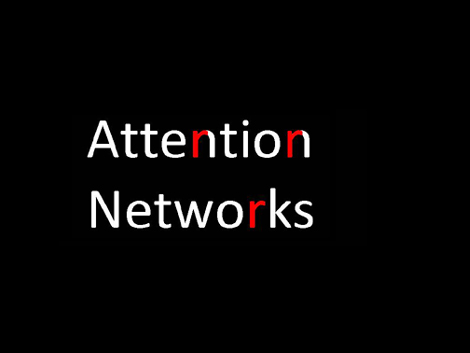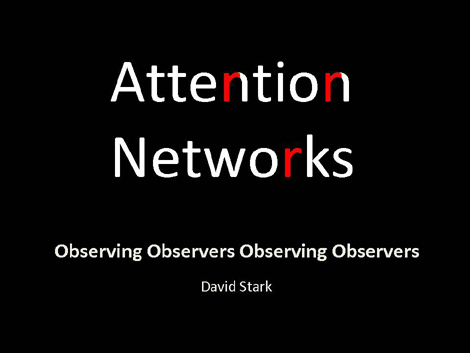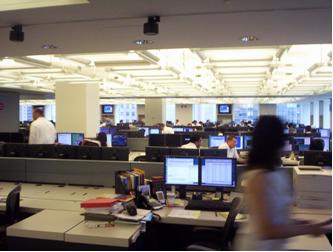“You can observe a lot just by watching.” Yogi Berra*
This quote from one of my favorite American philosophers should be the motto of ethnographers. Watching, being there, in situ, with eyes and ears open, in an attitude of curiosity, not knowing (especially not knowing in advance) what you are looking for but prepared to recognize it – this is still one of the very best techniques for data collection. But, of course, ethnographers have no monopoly on observing others.
Three recent papers observe observers observing others. The first, “From Dissonance to Resonance: Cognitive Interdependence in Quantitative Finance” (Economy and Society, 2012), by Daniel Beunza and myself, asks the question: How do traders deal with the fallibility of their models? In particular, how do they deal with the fact that, in identifying patterns in the markets, these same instruments can also blind the trader from seeing some things. As instruments of perception – and indeed, like the optic nerve itself which allows us to see but must also produce a blind spot – models that reveal also conceal.
How does the trader avoid such cognitive lock in? The answer is that traders leverage the fact that other traders are observing from a different vantage point. The traders at the merger arbitrage desk we studied could not observe what is on their rivals’ screens. But they can place on their screen an image of the “spread plot” which they skillfully use as a representation of the aggregate views of their rivals. When the spread plot moves in a direction different from one’s own estimates, traders can ask, “What am I missing?” and make corrections in their models. Such “reflexive modeling” can help an individual trader to avoid disaster. But it should come with a warning label: when the system lacks requisite diversity, the cognitive interdependence can create positive feedback that yields an arbitrage disaster – such as the $2.8 billion in losses to merger arbitrageurs (including the team we studied) in the GE-Honeywell deal. When the system lacks diversity of viewpoints, the same practices that do prove effective in mitigating individual cognitive lock in can lead to a collective lock in of enormous proportions.
The second paper observing observers observing is “The Structures of Uncertainty: Performativity and Unpredictability in Economic Operations” (Economy & Society 2013) by Elena Esposito who argues that, “the real purpose and function of the market… is to provide an arena for the mutual observation of observers.” This is a paper that rewards careful reading. It is theoretically rich and dense. Yet, rare among such texts, it is very clearly written with some wonderful, strong sentences. The essay ranges fairly widely, bringing in ideas about time from her book (see The Future of Futures: The Time of Money in Financing and Society, Edward Elgar, 2011), making a general argument about counter-performativity, and concluding with insights about the limits of probabilistic orientation.
 Most relevant for my purposes here is Esposito’s application of observation theory to the financial crisis. If you are not familiar with the concepts of first and second-order observations (from Luhmann but also from von Foerster’s Observing Systems), Esposito’s essay will serve as a useful introduction. Like my paper with Beunza, Esposito is interested in the fallibility of models and the relationship of that to traders’ observations of other traders. Any model would need to make assumptions about the actions of others. Things get really interesting, Esposito argues, when models become more sophisticated and begin to take into account that others are not simply acting but are acting on the basis of models (which themselves take into account that others are using models, each of which is probability based). As models become more sophisticated, more powerful, and better able to take into account model risk, prices become more volatile and the system as a whole less predictable. That is, the reliability of models contributes to the unpredictability of the system: “Under these conditions, every reliable forecast is destined to falsify itself, because the future reacts to the expectations imposed on it – where every additional reliable forecast contributes to an increased unpredictability of the future.”
Most relevant for my purposes here is Esposito’s application of observation theory to the financial crisis. If you are not familiar with the concepts of first and second-order observations (from Luhmann but also from von Foerster’s Observing Systems), Esposito’s essay will serve as a useful introduction. Like my paper with Beunza, Esposito is interested in the fallibility of models and the relationship of that to traders’ observations of other traders. Any model would need to make assumptions about the actions of others. Things get really interesting, Esposito argues, when models become more sophisticated and begin to take into account that others are not simply acting but are acting on the basis of models (which themselves take into account that others are using models, each of which is probability based). As models become more sophisticated, more powerful, and better able to take into account model risk, prices become more volatile and the system as a whole less predictable. That is, the reliability of models contributes to the unpredictability of the system: “Under these conditions, every reliable forecast is destined to falsify itself, because the future reacts to the expectations imposed on it – where every additional reliable forecast contributes to an increased unpredictability of the future.”
At the core of Esposito’s paper is an interesting theory of financial markets: “What is handled, in financial markets is uncertainty as such, resulting from a network of reciprocal observations of observers.” The last in our trio of recent papers moves to studying empirically the effects of such social structures of observation on valuation. “Attention Networks: A Two-Mode Network View on Valuation,” by Matteo Prato and myself, builds on the observational theory principle that valuation depends on the contingent viewpoint of the observer and on the views expressed by the observed. The observer’s viewpoints and observed views are for us embedded in the evolving two-mode (agents-assets) network structures of attention that characterize financial markets. Our argument starts with a simple question: What does it mean to focus on a financial asset?
One way to think about this is as a singular relationship of an actor to the asset. Another, quite popular way among sociologists, is to think about an actor examining an asset in relationship to an abstract category. We take a different view: Instead of positing that it is the “structure of classification that guides valuation” (Zuckerman 2004: 411), we argue that it is the structure of attention that guides valuation. In place of arguing that valuation is embedded in socially constructed categories, we argue that it is shaped by networks of attention.
 We define an attention network as an evolving network created by multiple agents allocating their attention and expressing their judgments across multiple situations. Valuation, we argue, is shaped by an actor’s location (or viewpoint) within such an attention network. That is, as a first step, we propose to study the relationship between paying attention and allocating attention. Focusing attention and allocating attention are not so very different. The objects across which one allocates attention are the ground against which the figure can be seen. If we as researchers can know the other objects that an actor has in her field of view, then we know the viewpoint from which she makes an assessment.
We define an attention network as an evolving network created by multiple agents allocating their attention and expressing their judgments across multiple situations. Valuation, we argue, is shaped by an actor’s location (or viewpoint) within such an attention network. That is, as a first step, we propose to study the relationship between paying attention and allocating attention. Focusing attention and allocating attention are not so very different. The objects across which one allocates attention are the ground against which the figure can be seen. If we as researchers can know the other objects that an actor has in her field of view, then we know the viewpoint from which she makes an assessment.
In assessing a focal situation, actors can make associations, analogies, and comparisons with the other situations that are present in their portfolio of attention. Specifically, a feature viewed as salient for evaluating one issue might be recognized as relevant for another. That is, the issues across which an actor allocates her attention will shape the properties that are selected as salient and worthy of consideration when assessing the focal situation.
We refer to this as the viewpoints effect. Our first proposition is that valuation is perspectival: One’s assessment of an issue is shaped by one’s viewpoint, given by one’s contingent portfolio of attention. We hypothesize, specifically, that two actors who assess a given situation vis-à-vis a similarly (differently) composed portfolio of other situations are more likely to autonomously converge (diverge) in their interpretations of the given situation.
Viewpoints are the first but not the only step in developing an observational network approach to valuation. Building on the second relational property of attention in a two-mode observational network (i.e., links among the competitors who pay attention to the same market issues), we expect that market actors are more likely to come across the assessments of the competitors who focus their attention on the same issues. When two competitors allocate their attention across more similar portfolios of problems, their views become prominently visible to each other. Associations made by one actor become noticeable to the other and vice-versa. Conversely, mutual exposure would be limited when two competitors are not in their respective fields of vision because they are allocating their attention to different market aspects.
Thus, our second proposition, referring to the views effect, is that valuation is doubly perspectival: actors’ valuations are not only shaped by their contingent viewpoints, given by their fleeting portfolios of attention, but also by the views of others, which themselves are shaped by their changing viewpoints. We, therefore, further hypothesize that, the more (less) two actors have encountered the same third actors’ views on the other situations to which they have not been attentive jointly, the more their interpretations of a given situation will converge (diverge).
We test these propositions in the context of securities analysts, whom we might think about as professional observers. In particular, we study the end of year earnings estimates that securities analysts make about the firms in their portfolio of coverage.
Whereas Daniel and I made our argument about reflexive modeling based on an ethnographic account of one merger arbitrage desk in one trading room (in fact, further limiting our account to what transpired on a single morning), Matteo and I conduct a statistical analysis of 10,933,662 pairs of analysts’ estimates on US publicly listed firms’ earning per shares. Our findings support the idea that an actor’s position in an observational network – via viewpoint and selective exposure to others’ views – shapes valuation.
Our sociological account of valuation exploits two-mode networks as a method of analysis. Objects are located within a network structure of attention given by the actors who observe and evaluate them. Meanwhile, actors are also located within a structure of attention given by the ties that connect them through the objects they observe and evaluate. Note the peculiar feature of this network. There are no direct ties among the agents. They are not proximate because of some personal connection. Their location in the social space of attention – their proximity to or distance from each other – is a function of ties formed through objects. In mapping these networks, we chart socio-cognitive networks.
In further research we will explore the community structure of such networks with an eye to investigating how different types of structures contribute to dissonance or resonance.
* I once quoted Yogi Berra at a Harvard conference on pragmatism. The quotation was apt: “In theory there is no difference between theory and practice. In practice there is.” I had used the quotation in arguing with a prominent German social theorist who then expressed some concern to a nearby participant that he was not familiar with this figure. He became incensed when, during the coffee break, he learned that the “famous American philosopher” was a New York Yankees baseball player. I thought it was all in good fun; but he was not at all happy. If we had been in a bar instead of the foyer of a Harvard building, it might well have resulted in a shoving match. I made a point of keeping a smile on my face, but even then it was quite tense before a mutual friend stepped between us. So, a note of caution about when, where, and how to quote American philosophers.
David Stark teaches in the Sociology Department at Columbia University. Publications, papers, course materials, and presentations (including ‘silent lectures’) are available at thesenseofdissonance.com.
Acknowledgements
As part of our inter-network collaboration this entry is co-posted with socializing finance. Trading floor image courtesy Daniel Beunza.


